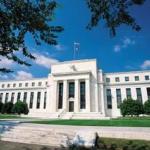 Goldman Sachs, Larry Summers, and the global financial alliance got their way last Thursday. Fed Chair Janet Yellen rolled over and slobbered on herself like a yellow Labrador…offering more ZIRP to please her masters. Savers, seniors, and freedom lovers the world over got sour lemons.
Goldman Sachs, Larry Summers, and the global financial alliance got their way last Thursday. Fed Chair Janet Yellen rolled over and slobbered on herself like a yellow Labrador…offering more ZIRP to please her masters. Savers, seniors, and freedom lovers the world over got sour lemons.
Here at the Economic Prism we always make lemonade when life gives us lemons. Moreover, when the glass is half empty we reach for a smaller glass. For it doesn’t take much to overflow a Dixie cup.
What we mean is Yellen did us all a grand favor. By continuing the insane policies of mass credit creation she’s accelerating the Federal Reserve’s ultimate demise. From our perspective, the sooner it’s over the better.
Some restraint by the Fed now would only extend the broken scheme out further into the future. Perhaps there’d be another 20 or 30 years more of this charade if the Fed were to pretend it was tightening down the cranks on the money supply. Why not get it over with now?
So if later is 20 or 30 years from now, how soon is sooner? Naturally, no one knows for sure. But we have an inkling that sooner is much sooner than the current establishment can fathom.
Blinded
When the Soviet Union bit the dust, for instance, hardly a soul foresaw it until the communist Politburo was gasping for air in its final six months. The top economists missed it. In fact, the very year the Berlin Wall fell academic economists were still heralding the successes of Soviet communism.
“The Soviet economy is proof that, contrary to what many skeptics had earlier believed, a socialist command economy can function and even thrive,” wrote Paul Samuelson in 1989. In hindsight, the Soviet economy was proof that a communist command economy hardly functioned, and never thrived. Per capita Soviet GDP was well below first world countries at the end of its run.
Samuelson, if you didn’t know, was one of the most highly decorated American economists of the 20th century. He was the first American to win the Nobel Prize in Economics and was an advisor to Presidents Kennedy and Johnson. Shouldn’t he, if anyone, have anticipated a Soviet breakdown?
Yet Samuelson didn’t. Instead, he spectacularly missed the Soviet Union’s imminent collapse. Was he looking too closely? Was his brain softened over by the hallowed halls of academia? Did he only believe what he wanted to believe?
Maybe it was the fact that for an economist to gain power and influence government policy they must believe government planning can improve upon the naturally occurring price discovery of free markets. That by manipulating prices government can manage an economy to better meet its ends. Thus, Samuelson’s zealot interest in Soviet economic success blinded him to its looming demise.
Command and Control Economics
Command and control of the U.S. economy is much looser than the Soviet Unions was. But it does share a common theme. Price fixing is central to its execution. Of course, the U.S. approach is largely hidden from the average lay person.
The Soviets, armed with their Five-Year Plans and the Theory of Productive Forces, directed how much wheat should be planted and how much bread should cost. In the U.S., central banking allows the government to bypass the need to muck around with individual prices…though they still do it through subsidies and appropriations.
Moreover, the Federal Reserve, an unelected board of appointments, crunches economic data each month to figure out what price to fix the economy’s most important commodity – its money. By doing so all other prices in the economy must change – and distort – to adjust to the Fed’s market intervention. Wild asset price swings have become the norm.
The Fed believes that by fixing the price of money artificially low people will borrow more and spend more, and, before you know it, the good times will be here again. But nearly seven years into it and they have a big fat goose egg for their efforts. Yet they continue it all the same.
The Fed’s latest inaction furthers its policies of rewarding spendthrifts and robbing savers. The approach, with each passing month, has become more and more absurd.
Last Thursday, following the announcement of more ZIRP, Yellen was asked if the Federal Reserve might keep interest rates at 0 percent forever. She responded, “I can’t completely rule it out but really that’s an extreme downside risk that in no way is near the center of my outlook.”
By Saturday John Williams, president of the Federal Reserve Bank of San Francisco, said “Given the progress we’ve made and continue to make on our goals, I view the next appropriate step as gradually raising interest rates, most likely starting sometime later this year.”
Indeed, the Federal Reserve’s days are numbered. What’s more, like the Soviet Union’s fate in the late 1980s, that number is much smaller than Yellen or Williams can possible imagine.
Sincerely,
MN Gordon
for Economic Prism
Return from Command and Control Economics to Economic Prism


